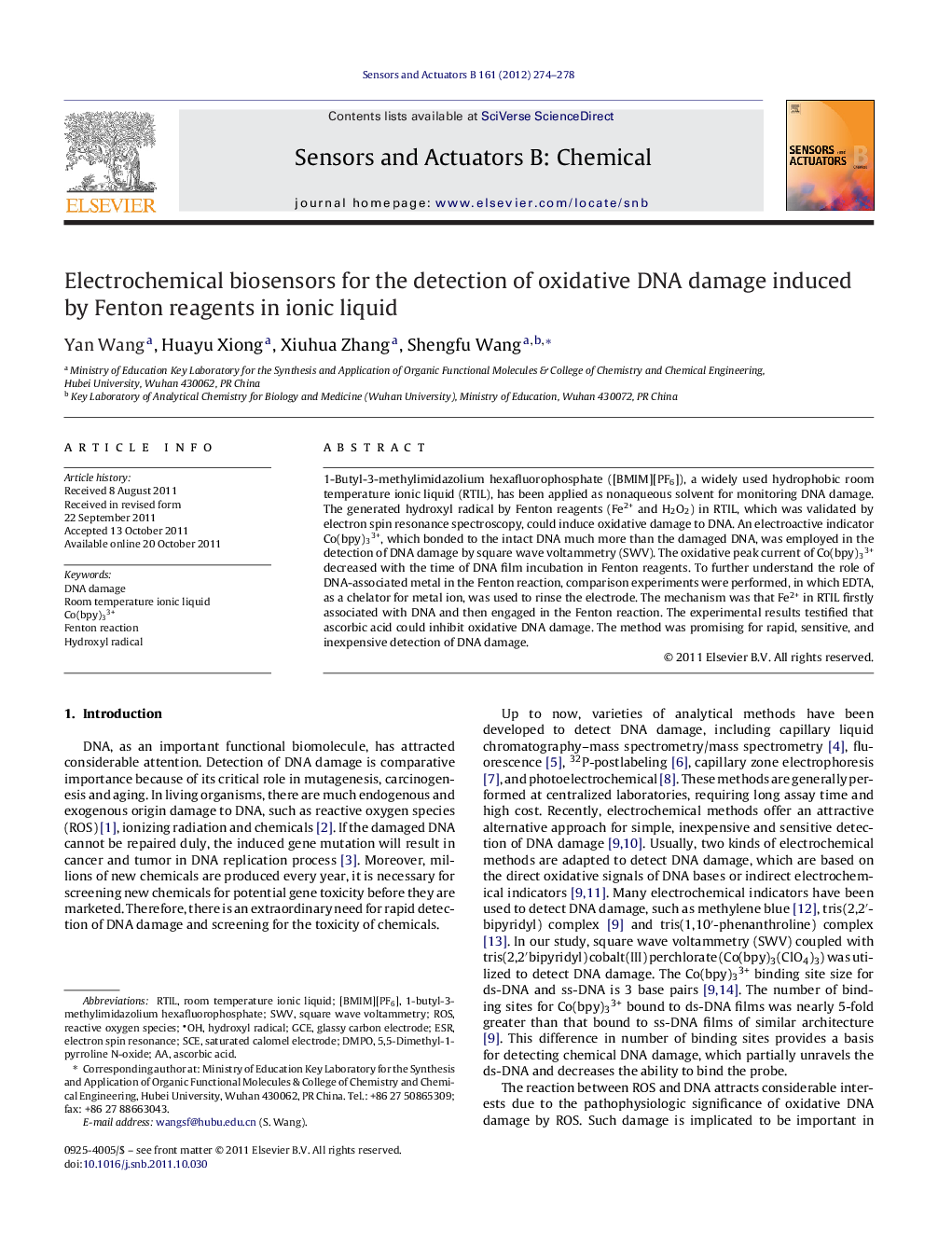| Article ID | Journal | Published Year | Pages | File Type |
|---|---|---|---|---|
| 743812 | Sensors and Actuators B: Chemical | 2012 | 5 Pages |
1-Butyl-3-methylimidazolium hexafluorophosphate ([BMIM][PF6]), a widely used hydrophobic room temperature ionic liquid (RTIL), has been applied as nonaqueous solvent for monitoring DNA damage. The generated hydroxyl radical by Fenton reagents (Fe2+ and H2O2) in RTIL, which was validated by electron spin resonance spectroscopy, could induce oxidative damage to DNA. An electroactive indicator Co(bpy)33+, which bonded to the intact DNA much more than the damaged DNA, was employed in the detection of DNA damage by square wave voltammetry (SWV). The oxidative peak current of Co(bpy)33+ decreased with the time of DNA film incubation in Fenton reagents. To further understand the role of DNA-associated metal in the Fenton reaction, comparison experiments were performed, in which EDTA, as a chelator for metal ion, was used to rinse the electrode. The mechanism was that Fe2+ in RTIL firstly associated with DNA and then engaged in the Fenton reaction. The experimental results testified that ascorbic acid could inhibit oxidative DNA damage. The method was promising for rapid, sensitive, and inexpensive detection of DNA damage.
